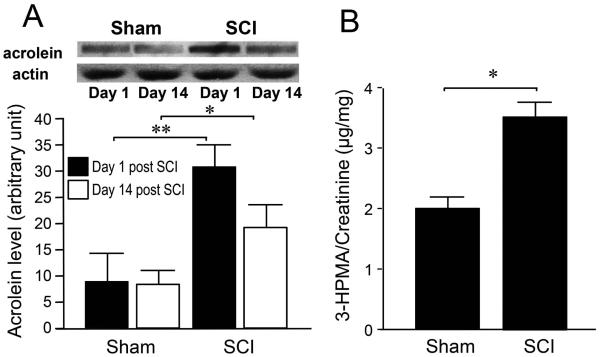Figure 3.
Elevation of acrolein-lysine adducts in spinal cord tissue and 3-HPMA in urine after spinal cord injury. A) Bar graph depicts the elevation of acrolein-lysine adduct levels in spinal cord tissue after contusive spinal cord injury (SCI) at 1 day and 2 weeks post injury. Measurements through dot immunoblotting indicated that SCI was associated with significant elevations of acrolein-lysine adducts 1 day following SCI compared to the sham injury group. Persistent elevations of acrolein-lysine adducts were observed for at least 2 weeks after SCI. Top: Representative blots for each condition. Bottom: Bar graph depicts the quantification of the bands density by Image J. N=6~8 for each group. * P < 0.05, ** P < 0.01. One-way ANOVA and Tukey test. B) Elevated level of 3-HPMA, an acrolein metabolite, in urine after SCI in rats (3.5 ± 0.24 μg/mg), when compared to sham injured group (1.9±0.21 μg/mg). Rat urine samples were collected one day after SCI to determine 3-HPMA level. N=4~6 in each group. * P < 0.05. unpaired t-test. All values were expressed as mean ± SEM.

